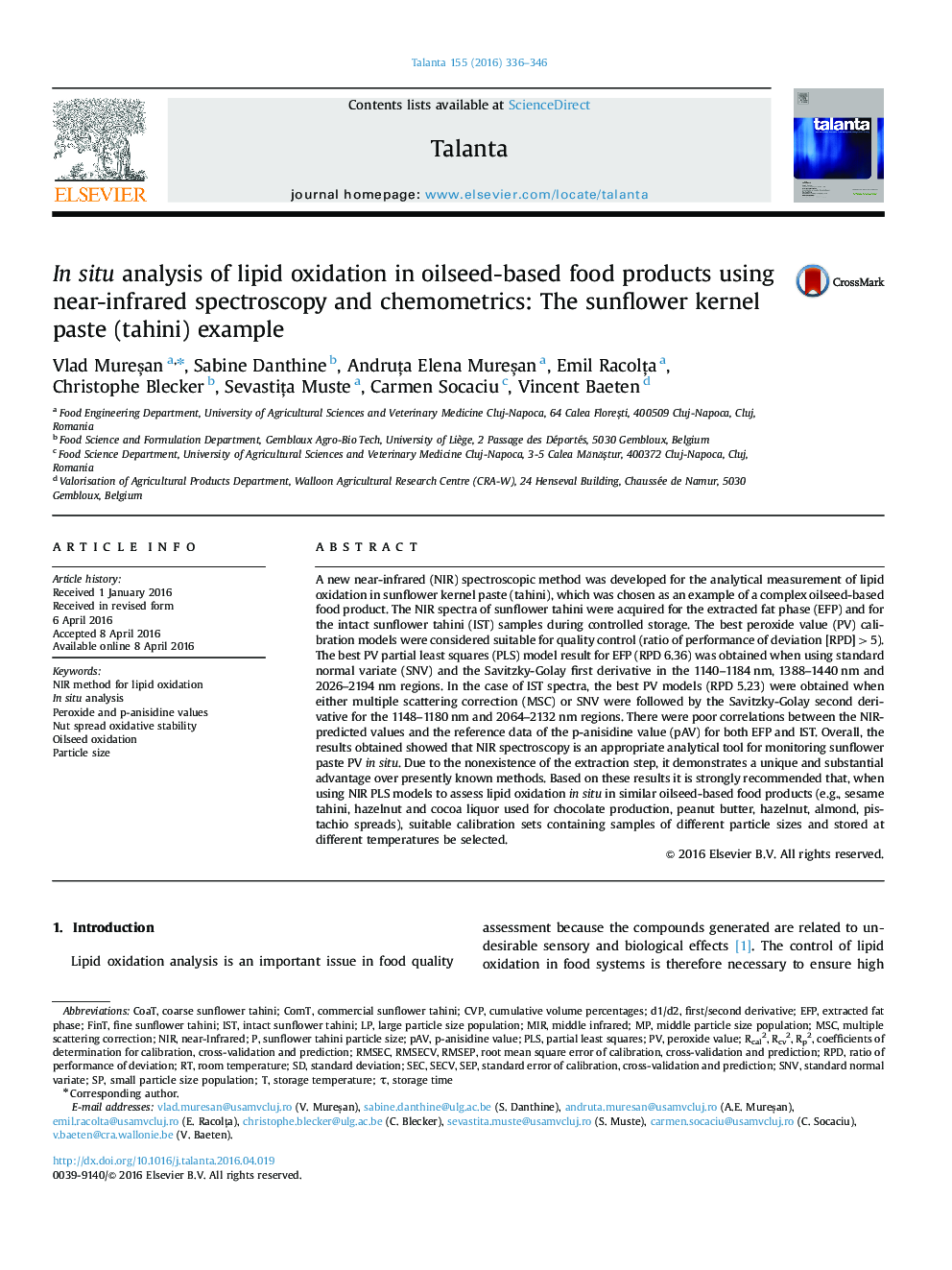| Article ID | Journal | Published Year | Pages | File Type |
|---|---|---|---|---|
| 1242448 | Talanta | 2016 | 11 Pages |
•Sunflower paste was studied as an example of a complex oilseed-based food product.•NIR method to monitor in situ sunflower paste oxidative stability was proposed.•Calibration models were developed on extracted fat phase and intact samples spectra.•Best peroxide value calibration models were considered good for quality control.•Prediction of p-anisidine value by NIR seems more problematic.
A new near-infrared (NIR) spectroscopic method was developed for the analytical measurement of lipid oxidation in sunflower kernel paste (tahini), which was chosen as an example of a complex oilseed-based food product. The NIR spectra of sunflower tahini were acquired for the extracted fat phase (EFP) and for the intact sunflower tahini (IST) samples during controlled storage. The best peroxide value (PV) calibration models were considered suitable for quality control (ratio of performance of deviation [RPD]>5). The best PV partial least squares (PLS) model result for EFP (RPD 6.36) was obtained when using standard normal variate (SNV) and the Savitzky-Golay first derivative in the 1140–1184 nm, 1388–1440 nm and 2026–2194 nm regions. In the case of IST spectra, the best PV models (RPD 5.23) were obtained when either multiple scattering correction (MSC) or SNV were followed by the Savitzky-Golay second derivative for the 1148–1180 nm and 2064–2132 nm regions. There were poor correlations between the NIR-predicted values and the reference data of the p-anisidine value (pAV) for both EFP and IST. Overall, the results obtained showed that NIR spectroscopy is an appropriate analytical tool for monitoring sunflower paste PV in situ. Due to the nonexistence of the extraction step, it demonstrates a unique and substantial advantage over presently known methods. Based on these results it is strongly recommended that, when using NIR PLS models to assess lipid oxidation in situ in similar oilseed-based food products (e.g., sesame tahini, hazelnut and cocoa liquor used for chocolate production, peanut butter, hazelnut, almond, pistachio spreads), suitable calibration sets containing samples of different particle sizes and stored at different temperatures be selected.
Graphical abstractFigure optionsDownload full-size imageDownload as PowerPoint slide
